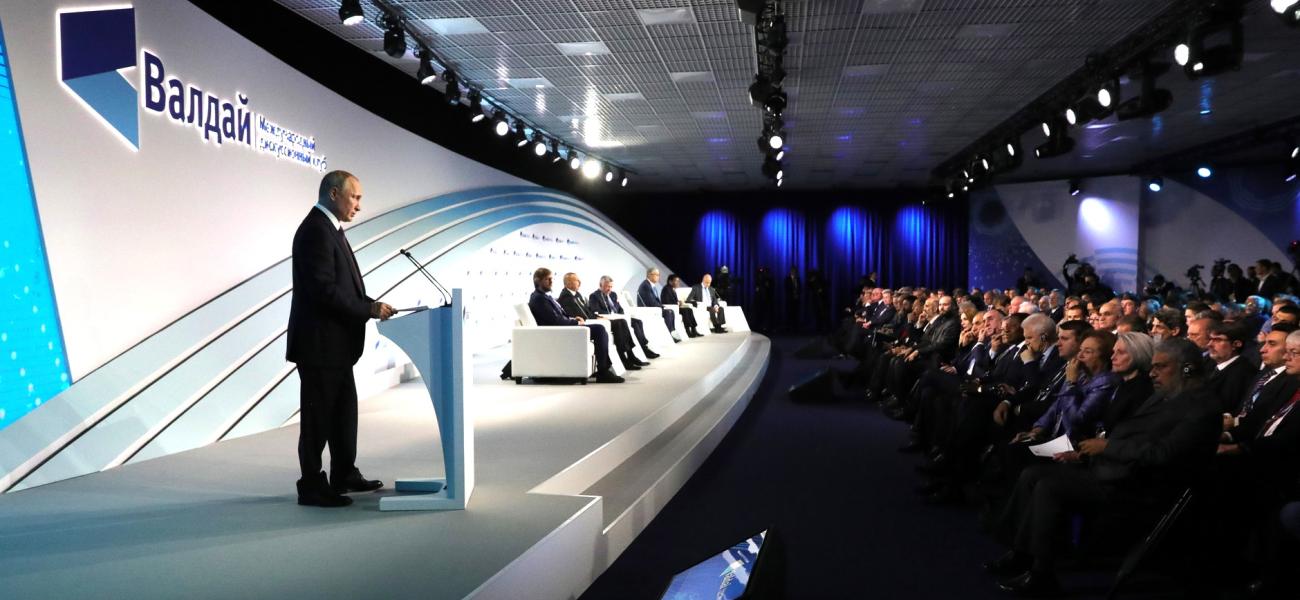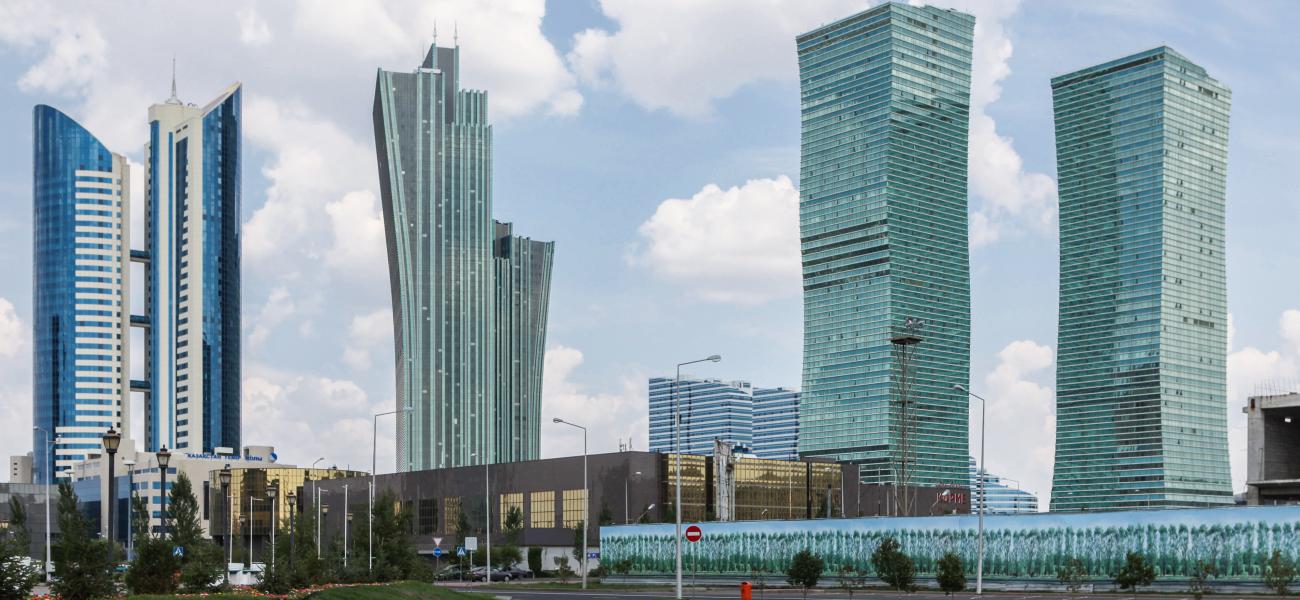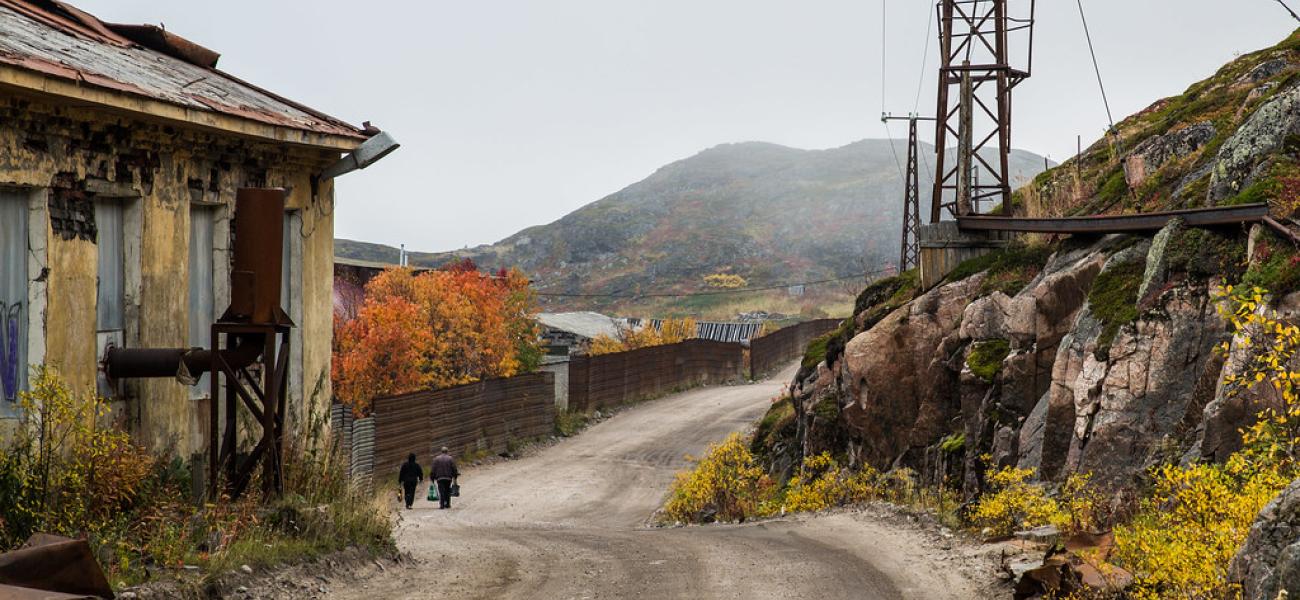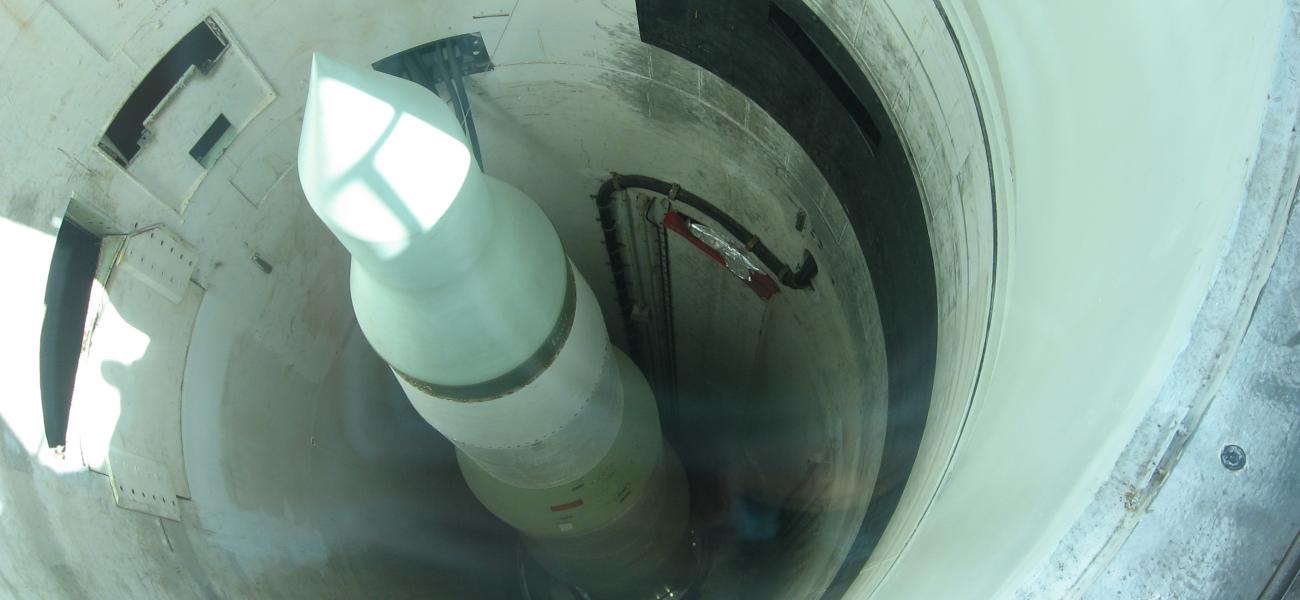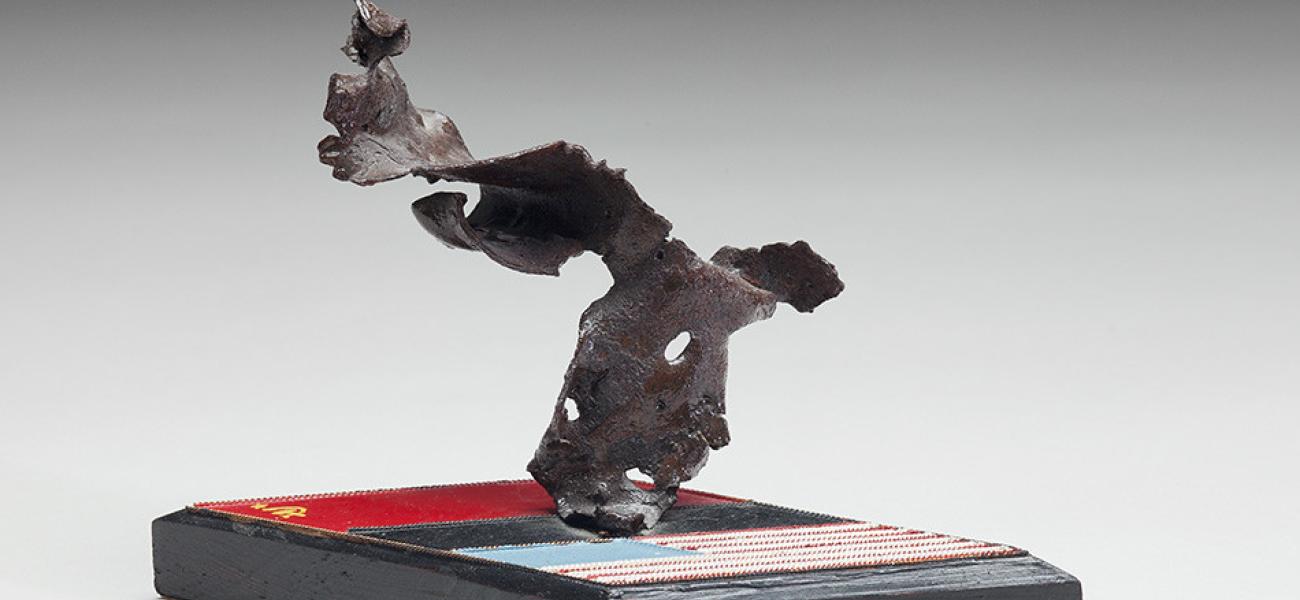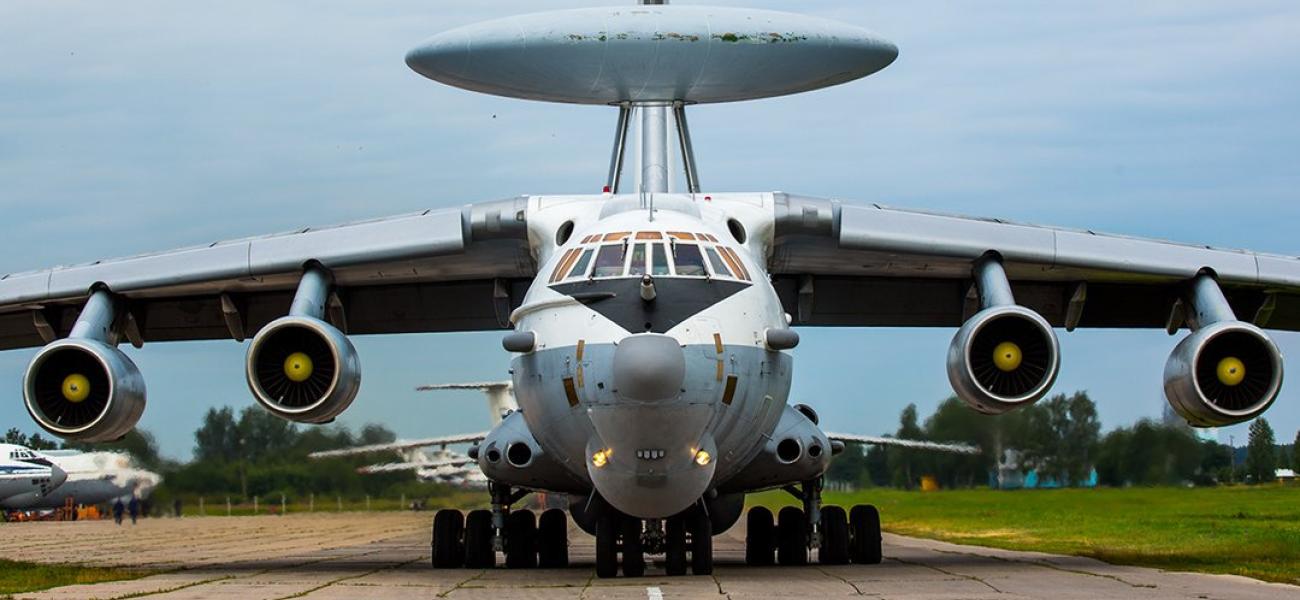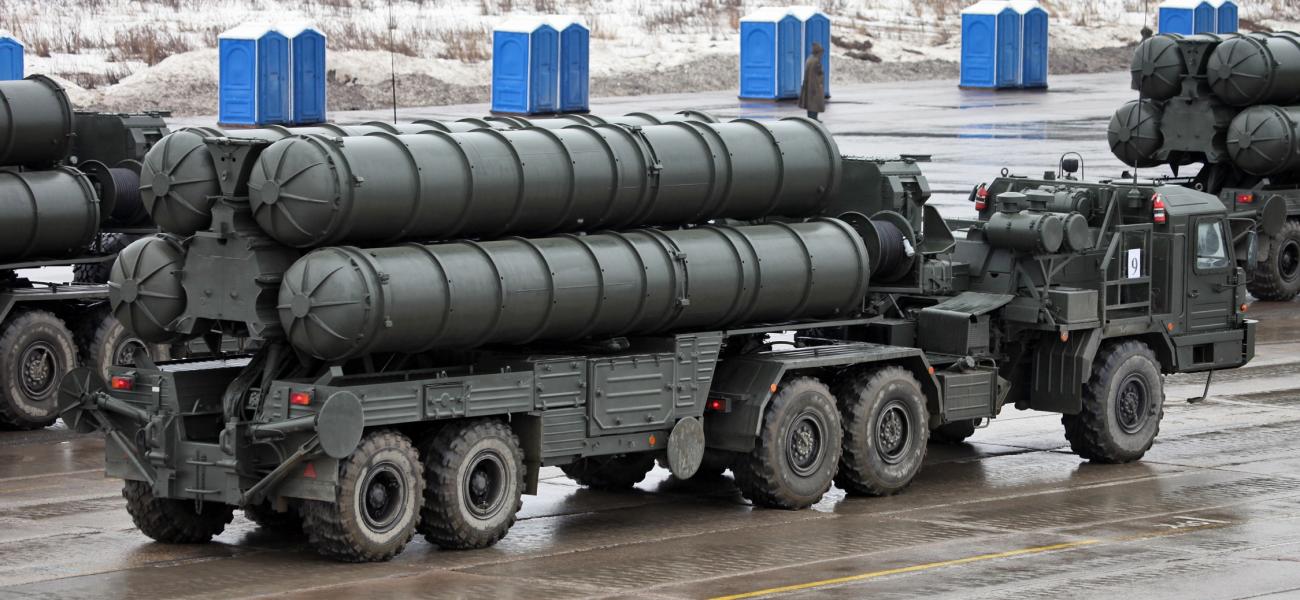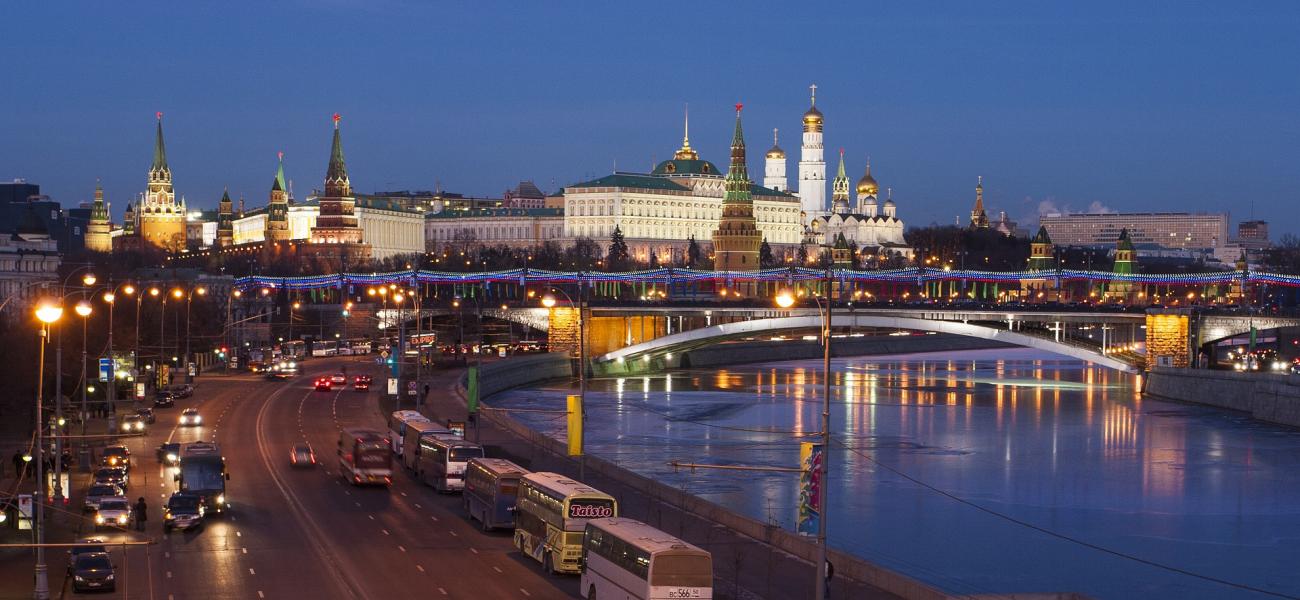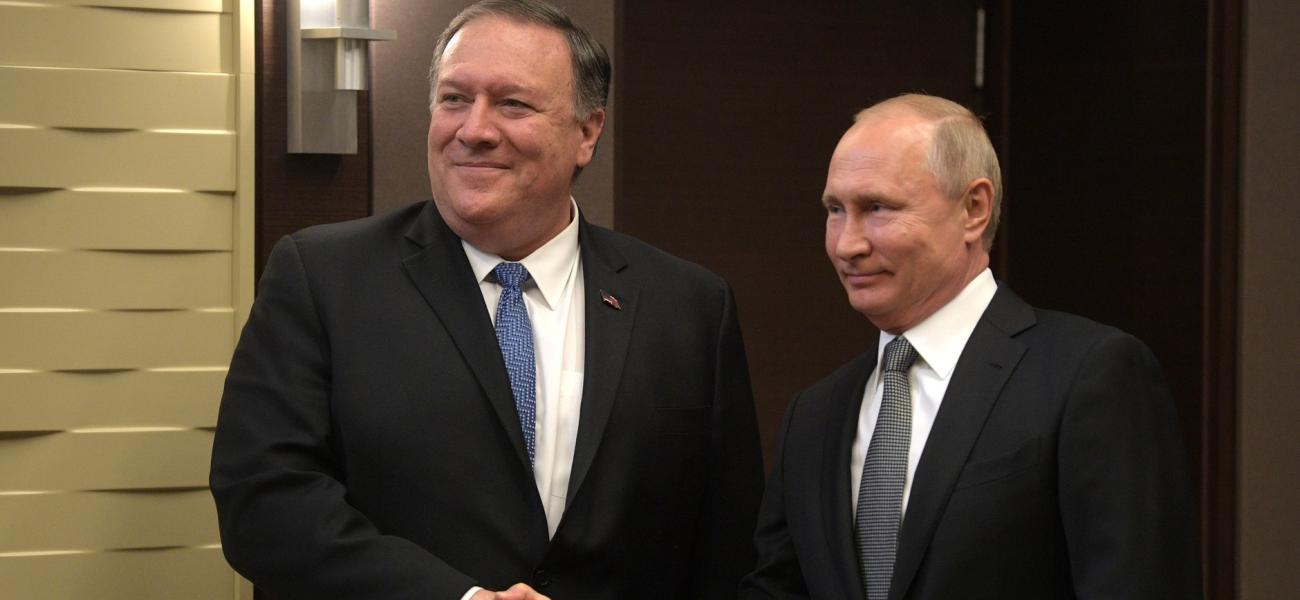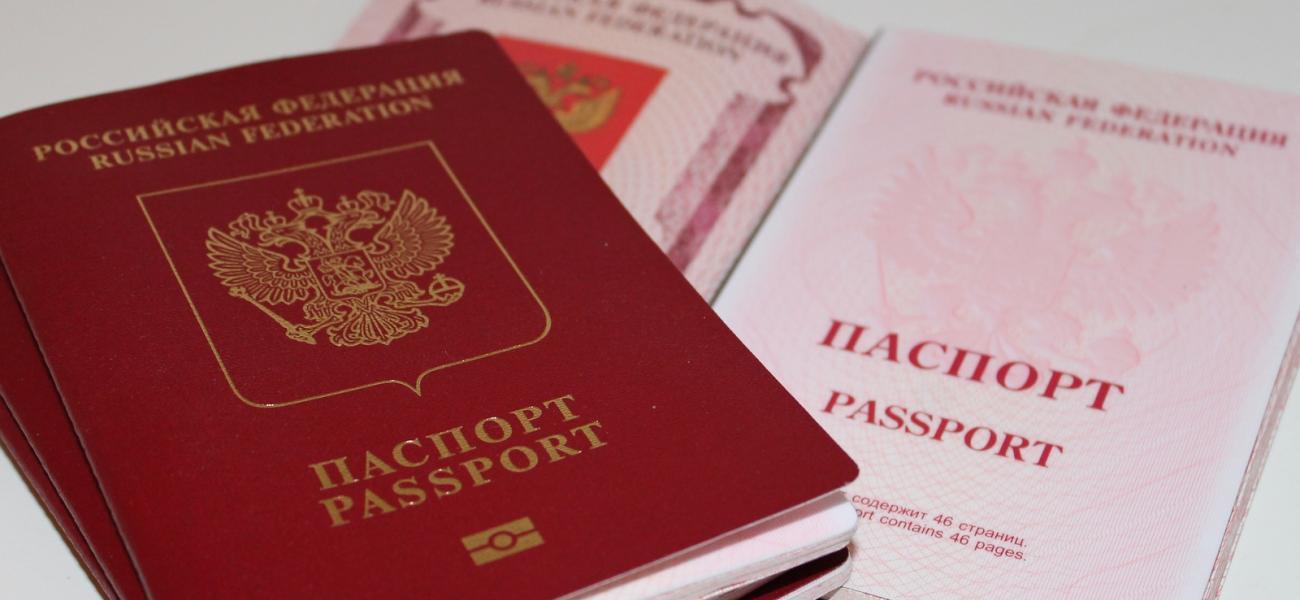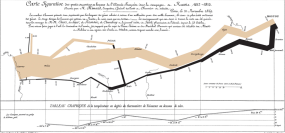The message from this year’s annual meeting of the Valdai International Discussion Club was clear: The U.S.-led hegemonic world order is over, Pax Americana is dead and soon Russia, along with China, will lead the way in promoting a new, “democratic” word order. And what is a democratic world order? One in which independent states set the rules for “responsible behavior” and the United States and allies can no longer dictate the rules.
In the Thick of It
A blog on the U.S.-Russia relationshipThis fall, Central Asia’s richest country was shaken yet again, on at least two separate occasions, by anti-government protests with decidedly anti-Chinese sentiments. Local unease with Beijing’s intentions and investments—which have ballooned to tens of billions of dollars throughout the region—has become easy to exploit for “the mischievous and hot-headed,” as a veteran Central Asia reporter wrote after the protests. It’s no wonder then that China’s role in the region, alongside Russia and other world powers, was a popular topic of discussion at a recent conference held by PONARS-Eurasia, a global network of scholars who convene once a year in Washington, D.C. Among the points that resonated most were that Central Asians’ perceptions of China are complicated, that Western countries have a role to play in Central Asia despite their limited presence in the region and that, whatever tensions Central Asia may cause in the Russia-China relationship, ties between the two countries are generally close and durable enough to withstand them. (The presentations described in sections one and three below can be viewed here.)
Russian Population Decline in Spotlight Again
Last week, in a meeting with top advisors, Russian President Vladimir Putin lamented the population decline in the country’s Far East, saying it falls in an “alarming, red zone.” While this sparsely populated region, which shares a border with far more densely populated Chinese provinces, may raise particularly acute demographic concerns for the Kremlin, the country’s population decline more broadly—in both absolute and relative terms—is once again vexing the Russian leadership. Earlier this year the U.N. Commission on Population and Development concluded that the world’s population will grow from 7.7 billion in 2019 to 9.7 billion by 2050, an increase of some 26 percent; Russia, meanwhile, was projected to lose a little over 10 million people, shrinking by about 7 percent from 145.9 million in 2019 to 135.8 million in 2050, according to the U.N.’s World Population Prospects. Indeed, Russia’s population has dropped for the first time in a decade: According to World Bank data, this happened between 2017 and 2018 and the year-on-year drop was about 19,000; according to official Russian population statistics—which have been recalculated for 2015 and beyond to include the population of Crimea after its annexation from Ukraine—the drop happened between the start of 2018 and 2019 and was close to 100,000. While estimates of the country’s population vary from source to source (official national statistics place it at 146.8 million), the current downward trend is now undisputed. Its causes include a declining birth rate, a relatively high mortality rate and a drop in inbound migration.
Is the risk of a nuclear war between the U.S. and Russia now higher than at the height of the Cold War? Yes, it is, according to an article former U.S. Energy Secretary Ernie Moniz and former U.S. Sen. Sam Nunn have penned for Foreign Affairs. “Not since the 1962 Cuban Missile Crisis has the risk of a U.S.-Russian confrontation involving the use of nuclear weapons been as high as it is today,” the co-chairs of the Nuclear Threat Initiative warn in their commentary published on Aug. 6, 2019. To back their claim, the two American statesmen describe an imaginary scenario in which Russian air defense systems shoot down a NATO aircraft that has accidentally veered into Russian airspace during a wargame in Russia’s Kaliningrad exclave in 2020. This incident sets off a chain of events in which NATO rushes air squadrons to the region, while “a cyberattack of unknown origin is launched against Russian early warning systems, simulating an incoming air attack by NATO against air and naval bases in Kaliningrad.” With only minutes to confirm the authenticity of the system’s alert, the Russian military-political leadership orders conventional cruise missiles to be launched from this exclave at NATO’s Baltic airfields, according to the scenario. NATO then responds ...
Farewell, INF Treaty: Good Reads on a Historic Arms Control Pact and the Impact of Its Demise
It’s official: On Aug. 2 the U.S. formally withdrew from the Intermediate-Range Nuclear Forces Treaty, widely known as the INF, stirring up fears of a new arms race in Europe. The 1987 pact with Moscow banned both nuclear and conventional missiles with a range between 500 and 5,500 kilometers and was historic in that it “marked the first time the superpowers had agreed to reduce their nuclear arsenals, eliminate an entire category of nuclear weapons” and use “extensive on-site inspections for verification,” according to the Washington-based Arms Control Association.
Speaking a day earlier, U.S. Secretary of State Mike Pompeo reiterated Washington's position that “Russia remains in material breach of its treaty obligations,” a charge first leveled during the Obama administration. Russia has denied the allegations in the past and has leveled accusations of its own concerning U.S. compliance. This week Moscow called on the U.S. and other NATO members to declare a moratorium on INF-range missiles “in certain regions,” news agencies reported.
U.N. Secretary General Antonio Guterres called the treaty “an invaluable brake on nuclear war,” warning that its demise “will likely heighten, not reduce, the threat posed by ballistic missiles.”
For those who want to delve deeper into still relevant aspects of the treaty and its collapse—like possible consequences and prospects for a follow-on—we offer some of the best INF-focused articles to appear on Russia Matters:
- “Expert Survey: Is Nuclear Arms Control Dead or Can New Principles Guide It?” July 30, 2019: What arrangements could emerge from the rubble of U.S.-Russian arms control and what should be their guiding principles? Eight leading international experts weigh in.
- “The INF Quandary: Preventing a Nuclear Arms Race in Europe. Perspectives from the U.S., Russia and Germany,” Jan. 24, 2019: Three highly respected experts—William Tobey, Pavel Zolotarev and Ulrich Kühn—weigh in on the consequences of the INF’s demise and prospects for some sort of INF follow-on.
- “Withdrawing From the INF Treaty: Consequences and Costs,” Oct. 23, 2018: Ten eminent experts from the Belfer Center and three highly regarded Moscow-based experts assess the consequences and costs of the U.S. withdrawal.
- “After the INF Treaty: An Objective Look at US and Russian Compliance, Plus a New Arms Control Regime,” Dec. 7, 2017: Retired Brig. Gen. Kevin Ryan explains which Russian concerns about U.S. compliance with the INF Treaty are legitimate and proposes a new treaty focusing on warheads instead of delivery systems.
- “A Strategy for (Modestly Increasing the Chance of) Saving the INF Treaty,” May 11, 2017: James Acton argues that, while it was highly unlikely (even two years ago) that Russia would return to compliance with the INF Treaty, the U.S. should make every effort to create three realities that Moscow can’t ignore.
- “Russia's Missile Gamble: Is the INF Treaty Dead?,” March 9, 2017: William McHenry explores the root causes of Russian misbehavior with regard to the INF.
Photo: Sculpture made of shrapnel from a Soviet missile destroyed per the terms of the INF Treaty. Gift to U.S. Ambassador Eileen Malloy. Collections of the U.S. Diplomacy Center.
Russian Plane Draws Shots from South Korea in First Air Patrol with China: Belfer Experts Weigh In
South Korean fighter jets fired over 300 warning shots at a Russian Air Force A-50 Mainstay Airborne Early Warning aircraft on July 23 after the Russian plane twice violated South Korea’s airspace above the East Sea, according to South Korean authorities cited by The Aviationist. Earlier that day, Russian and Chinese bombers had conducted their first long-range joint air patrol in the Asia-Pacific. Russia’s Defense Ministry said there had been “no violations of airspaces of foreign countries” in its joint patrol with China, according to the New York Times, and Russian diplomats in Seoul reportedly complained of inaccuracies in the official comments from South Korea.
In considering the incident, it’s important to note, as The Aviationist points out, that “there’s a significant difference between territorial sky,” otherwise known as a nation’s sovereign airspace, and air defense identification zones, or ADIZs, which “are not defined in any international law” but determined by countries as “an airspace … where identification, location and control of aircraft over land or water is required in the interest of national security.” The New York Times reported that in 2013, two weeks after China unilaterally expanded its air patrol zone to disputed territory, South Korea expanded its ADIZ “for the first time in 62 years to include airspace over the East China Sea that is also claimed by China and Japan. Since that expansion, the air defense zones of all three countries have overlapped.” (Japan said it had also scrambled jets in response to the Sino-Russian patrol and had lodged formal complaints against both Moscow and Seoul, the New York Times story said.) Russia's Defense Ministry, according to Reuters, said it did not recognize South Korea's ADIZ, while “the Chinese Foreign Ministry said the area [in question] was not territorial airspace and that all countries enjoyed freedom of movement in it”; the Pentagon, meanwhile, said it supported South Korea’s and Japan’s responses.
According to South Korea’s military, the July 23 incident marked both “the first time that a foreign military plane has violated Korea's territorial sky and South Korea fired warning shots in response” and also “the first time that Russian and Chinese aircraft entered KADIZ [Korea’s ADIZ] simultaneously,” the Yonhap news agency reported. (Separate KADIZ violations are relatively common, the agency suggested, with Chinese military aircraft entering 25 times and Russian planes 13 times just this year.)
Russia Matters asked some members of the Belfer Center’s Russia team for their take on the developments.
Matthew Bunn
Professor of Practice, Harvard Kennedy School; Co-Principal Investigator, Belfer Center’s Project on Managing the Atom
This is further evidence that thinking is needed on how to (a) broaden the Incidents at Sea and Dangerous Military Activities-type agreements beyond the U.S. and Russia and (b) make them actually function properly.
Kevin Ryan
Associate, Belfer Center; Member, Belfer Center’s U.S.-Russia Initiative to Prevent Nuclear Terrorism; Founder, Elbe Group
For me the significant point is the joint air patrol. (Yes, a shoot-down could trigger a series of events ending in open conflict, but it is not likely given previous examples like Turkey’s shoot-down.) I have been watching for signs of a “Pacific region security initiative,” which is called for in the 2014 Russian military doctrine. The way Chinese troops were included in the Vostok 2018 mass exercise, together with these joint patrols and other efforts, indicates that Russia and China are creating some ability to work jointly militarily in the Pacific. I want to know if their relationship will look like NATO (which Russia has publicly ruled out) or like U.S.-Canada or some other association.
In the 2014 doctrine, Russia claims it won’t create a formal military alliance in the Pacific. But whatever it is called, there is something being created.
Additionally, I am not sure the news accurately tells us where the planes were. If the firing occurred in or very near territorial airspace, it would be similar to the Turkey shoot-down. But if it occurred way out in ADIZ, then the South Korean military acted dangerously (perhaps illegally) in firing.
We can all recall the Soviet shoot-down of a Korean airliner in 1983. That was a mistake and Russia uncharacteristically gave a public briefing to explain its side of events. The Soviets also forced a Korean airliner to land on a frozen lake in the west near Murmansk in 1978. The airliner had strayed into Soviet airspace. That caused a death and injuries.
I’m wondering why Russia and China would do joint air patrols near a third country’s airspace. Militaries do joint operations to practice so they can do them more often and better. Perhaps they’re going to increase patrols and want to get better at avoiding incidents. I doubt that they’re going to share patrol responsibility over their own air space. If people like Alexander Golts are right, then Russian senior military still want a military force capable of fighting a major adversary (i.e., more than just a local conflict). Russia can’t do that for the foreseeable future by itself. China may have made the same assessment. I think they are building a joint capability that will exist without any formal treaty or commitment—just an understanding that the joint capability may be needed in the future. It could backfire on Russia if China decides to flex its muscles in Russia’s Far East. That kind of thinking backfired on Russia in 1941.
William Tobey
Senior Fellow, Belfer Center; Director, U.S.-Russia Initiative to Prevent Nuclear Terrorism; oversaw INF Treaty compliance policy in the George H. W. Bush administration
The joint patrol was a message that Russia and China intend to be mutually supportive on Northeast Asia security issues (and perhaps more broadly). It’s political, not practice. Of course, whether or not that can last is an open question. China wants to assemble some help against the United States, Japan and South Korea. Russia needs any friend it can get. Not surprisingly, they picked what they thought was the weakest link (which turned out not to be so weak).
Published jointly with the Belfer Center's U.S.-Russia Initiative to Prevent Nuclear Terrorism.
Photo: A Russian Defense Ministry A-50 early-warning plane standing on the tarmac in Ivanovo, Russia. (Source: Russian Defense Ministry's Twitter feed)
In August 2014 then-President Barack Obama claimed in an interview with The Economist that “Russia doesn’t make anything.” Two years later, in December 2016, he added a disclaimer: Russia “doesn't produce anything that anybody wants to buy except oil and gas and arms,” he told reporters. The past week has proved that Obama was right to modify his claim. First, Russia began delivering parts of its S-400 missile defense system to NATO member Turkey, which the latter had purchased in a $2.5 billion deal. While a July 11 story in the Wall Street Journal said that the S-400 “on paper … outperforms the comparable U.S.-made Patriot system,” an earlier comparison ...
Did Putin's gamble in Ukraine pay off? Is the Kremlin using gangsters as foreign-policy levers? How much did the Russian Orthodox Church help revive the country’s military and nuclear complex? How likely is an alliance between Moscow and Beijing? Find answers to these questions and many more in the latest crop of our most popular reads. Check them out below.
Top 10 of 2019 (so far)
1. 5 Years Since Russia’s Intervention in Ukraine: Has Putin’s Gamble Paid Off? by Simon Saradzhyan
2. Gangster Geopolitics: The Kremlin’s Use of Criminals as Assets Abroad by Mark Galeotti
3. How Much Did Orthodox Church Help Revive Russia’s Military and Nuclear Complex? by Dmitry Gorenburg
4. Russia’s National Projects: Economic Reboot or Mucky Bog? by Ben Aris
5. How Big a Threat Is Russia? An Interview With Graham Allison by RM Staff
In an upbeat and conciliatory atmosphere that nonetheless could not hide all the many differences between Moscow and Washington, U.S. Secretary of State Mike Pompeo met on May 14 with his Russian counterpart, Sergei Lavrov, and later with President Vladimir Putin in the seaside Russian resort town of Sochi. The visit, as noted by the Financial Times, “comes amid speculation over the potential for new U.S. sanctions against Russia, clashes between the two countries over the crisis in Venezuela and moves by the U.S. to isolate Iran, an ally of Moscow.” Pompeo—who was making his first trip to Russia in his current role—and Lavrov said their meeting covered an array of issues that have heightened U.S.-Russia tensions, including Iran, Syria and Venezuela. Prior to the talks, a senior State Department official had told reporters that the two foreign ministers would be having a “very candid conversation” about concerns in the bilateral relationship.
Below you will find key comments related to the meetings made by Pompeo, Putin, Lavrov and other officials, as well as some analysis and recent developments that add important context. This post may be updated as more information becomes available.
Key to Putin’s Passport Offers to Ukrainians? Russia’s Shrinking Labor Force
Russian President Vladimir Putin’s recent decree to make it easier for residents of some separatist-controlled parts of Ukraine to get Russian citizenship has drawn criticism not only from Kiev but from key partners of the Ukrainian government, such as the U.S., EU and individual EU states. His subsequent statement that this liberalization may be extended to all citizens of Ukraine drew even greater fire, with both the Ukrainian government and its partners accusing the Russian leadership of seeking to assault Ukraine’s territorial integrity, test its newly elected leader Volodymyr Zelenskiy and even engage in banal trolling. The first two of these accusations are not groundless, but they ignore what I think could be the most important among the many factors that have shaped Putin’s decision: Russia needs more working hands and the best way to get them, in the Russian leader’s view, short of an instant demographic miracle would be to stimulate labor migration from countries where workers are (a) skilled, (b) speak Russian and (c) are culturally close enough that Russian authorities and companies do not have to spend undue money and time trying to train or integrate them. Ukrainians fit these requirements perfectly. Seventy-two percent of its workers had post-secondary education as of 2017 compared to Russia’s 66.6 percent, according to the World Bank; most of them are Orthodox Christian and many of them speak fluent Russian.
Russia’s own labor force has declined by 3 percent in 1992-2018, totaling 73.6 million last year, according to the World Bank and is bound to keep shrinking by 800,000-900,000 a year until 2025, according to researchers at the Russian Presidential Academy of National Economy and Public Administration (RANEPA). Putin’s plan aims to change this trajectory, attracting workers from Ukraine, which as of 2018 had nearly 20.3 million individuals aged 15 and older “who supply labor,” which is how the World Bank defines the labor force.

